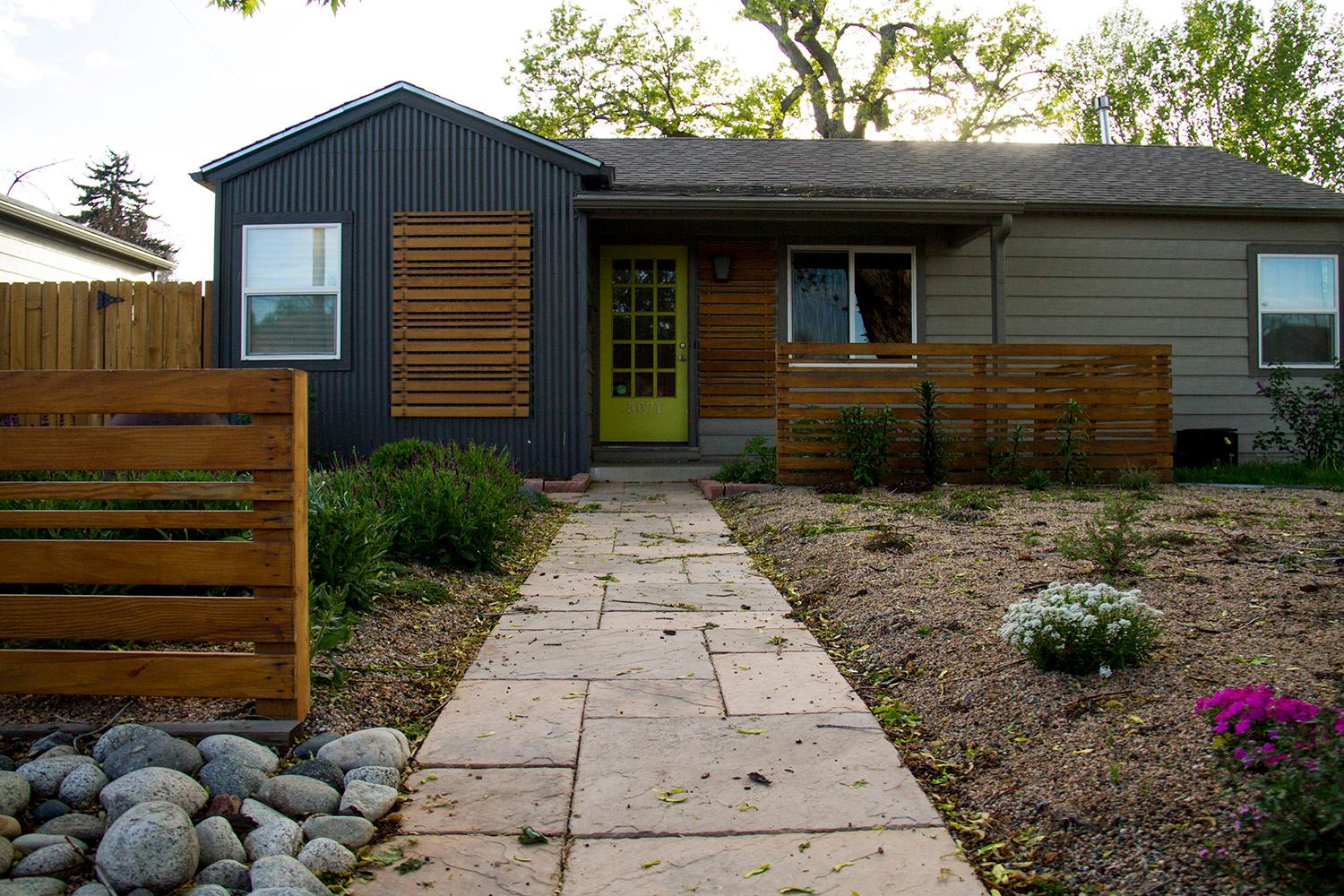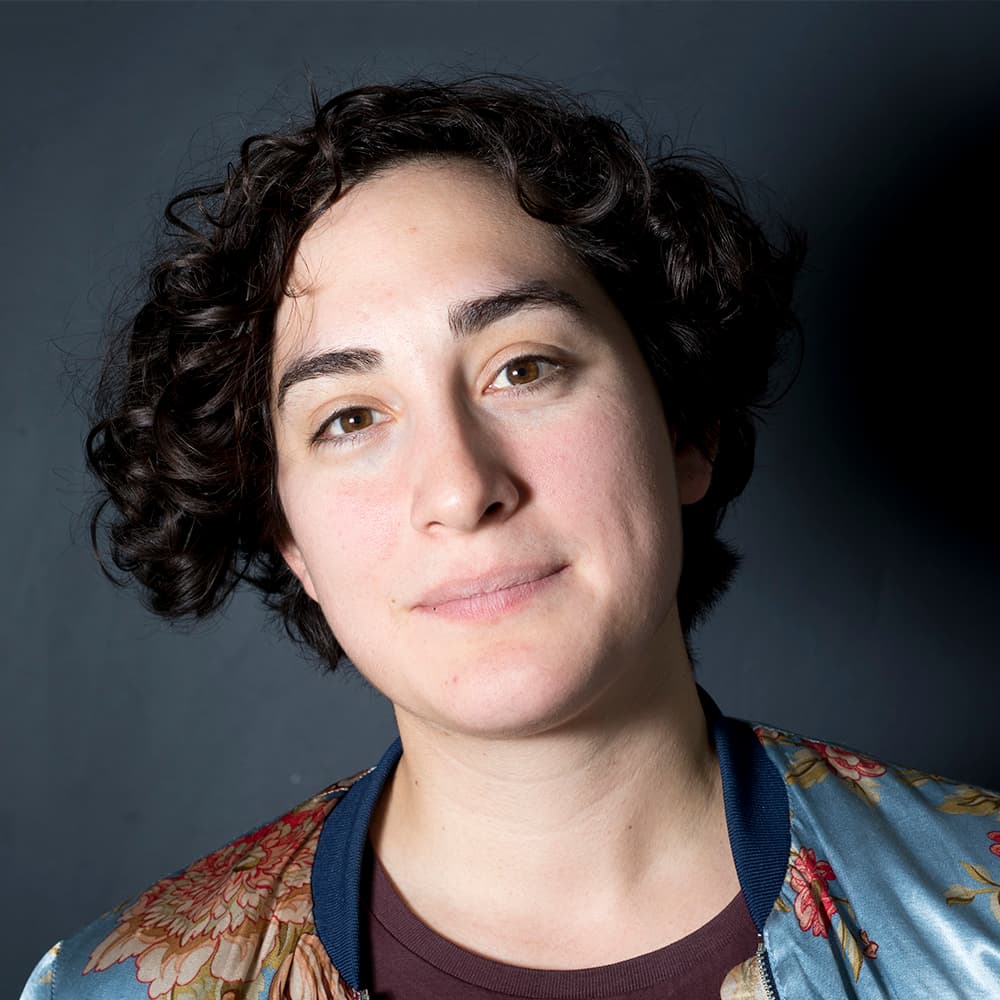
Flipped houses sometimes feel like the emblem of gentrification. Think the modern home that's not trying to to match the culture that came before it. So are those homes the beginning of gentrification, or just a symptom?
It's a little bit of both. In its simplest form, house flipping is a speculative game. When someone buys a house to flip, they expect that it will sell for more.
Research on house flipping suggests that even a small portion of optimistic investors (more on how small in just a moment) can have a big impact on house prices in a neighborhood. Which can then translate to less affordable living conditions. Finally, others have found that the neighborhood amenities — restaurants and the like — follow the changing population. Put another way: "Retail follows residential."
Last, says Travis Steffens, president and CEO of R Investments, come the new builds. Some people call them scrape-and-builds. These are the houses that might come to mind when you imagine a flipped house: that home on the block that looks totally rebuilt, and depending on your taste, too contemporary ("fugly," to some in Denver).
Steffens says that flipping "definitely leads to re-gentrification based on the surroundings of that neighborhood."
SEE ALSO: In booming Denver, the role of flipped houses is changing.
Steffens flipped houses before 2010, but stopped after the profits dried up. In fact, he doesn't even live in Denver anymore. Steffens moved to Arizona in 2014 to work on apartment buildings.
"I watched LoHi go from the place everyone was scared of to, now, a totally yuppie neighborhood because of all of the urban development that happened throughout the neighborhood: all of the pubs opening up, all of the restaurants opening up," he said.
That's despite flips being a relatively small percentage of real-estate sales.
“As much as I didn't like it when I was trying to buy my entry-level home, now I look at it as there are far bigger problems in the house market than flipping,” said Denver Councilman Rafael Espinoza. “We're talking about such a small percentage of homes sold that are out there or need to be out there.”
He’s right — flipped houses are a small percentage of the real estate sales in Denver since 2008: 5.1 percent. But the 24 census tracts that Denver has classified as gentrifying frequently overlap with the census tracts that have seen a lot of house flipping.
Flippers create momentum in a real estate market
Real estate developers buy properties with the expectation of selling them for profit. That optimism, even for a big purchase like a home, is contagious. Like how watching your Facebook friends buy a home might make you think it's a good idea.
The same logic held true in Michigan from 2004 to 2005, according to a 2009 paper from the National Bureau of Economic Research. Even though houses were thought to be "too expensive," the number of people who thought prices would continue to go up increased to a 25-year high.
That brings us to flippers like Donavon Paschall, from Root Development.
The projects listed on Root Development range in price from about $300,000 to $1,000,000. But ask Paschall if his work gentrifies the community and he'll tell you that house flippers aren't ones really setting the prices.
"Ultimately, there has to be that demand, and I would say that's that gentrifying group moving in, buying those houses, which really is the driving force of gentrification. I think it's a growing economy," he says.
Though renters lose out in that scenario, Paschall admits, the house seller gets a nice bonus. Even if they're not alive and it's their estate being sold:
"I've seen people make comments like 'Mr. X would be rolling in his grave that his house was scraped,' or whatever, and I just think that's maybe not the case. I bet Mr. X would be ecstatic that the highest-paying person brought the largest sum of money to his family that now his family can use to take care of his heirs."
Changing neighborhoods, changing faces
In North Park Hill, Elder Craig Johnson says that a lot of his neighbors have died or moved lately. When he moved into his house in 1973, he knew all his neighbors. Now he says he knows six or so.
Johnson also sees fewer black families too.
You might've guessed, but he lives in a neighborhood where a lot of house flipping happened.
Heavily-flipped neighborhoods since 2008 also had a significant Hispanic and black population during 2010 to 2014, according to city's demographic data.
Half of of the top 10 neighborhoods for flipping were predominantly Hispanic during that time, according to Denverite's analysis. Eight out of the top ten were not majority white by percentage.
On the flip side, among the ten least flipped neighborhoods, seven were majority white by percentage. Globeville and Sun Valley are two notable exceptions among the least flipped neighborhoods. Recent city investments in Globeville are attracting investor attention though.
Of course it's not as simple as house flipping = racial displacement. Remember how foreclosures have a big impact on where house flipping happened? Subprime mortgages, the tool that fueled the foreclosure crisis, disproportionately affected people of color.
Though Denver participated in the Neighborhood Stabilization Plan to create affordable housing after the crisis, the participating organizations didn't buy every single foreclosed property. So, not every displaced family would've had an affordable ticket back to the city.
Frustratingly, the data can't tell us the exact racial makeup of Denver neighborhoods right now, in 2016. The American community survey reliably provides a snapshot from the five-year period from 2010 to 2014. In its study on gentrification, the city didn't include race because of "limitations of this data."
At the same time, the city study bases its definition of gentrification on a another study from Portland where race was a factor. Plus, it's something that, anecdotally, people note when talking about neighborhood changes.
How neighborhood are changed is question worth struggling with. Or as Lisa K. Bates, the author of the Portland study, wrote:
When residents of color are displaced, they have fewer choices in the housing market due to lower incomes, more limited access to mortgage credit, and discrimination.
What if Denver tried to stop house flipping?
San Francisco flirted creating a speculation tax for rental properties in 2014 that would have penalized property owners who quickly resold. Voters rejected the idea, but the Center for NYC Neighborhoods called San Francisco's proposal "a promising framework," in its recommendations for how to deal with flipping.
One real life example of an urban anti-speculation tax is Washington D.C..
During the 1970s, property flipping in D.C. was rampant. Whole blocks were bought and sold, over 30 Realtors admitted to pressuring elderly black homeowners to sell, and tensions were high.
After a long political battle, the city's watered-down anti-speculation bill was passed, and effect of the law were underwhelming at best:
During its three years on the books, only seven people paid the tax, and, of that group, one was refunded. ... In a half-hearted attempt to enforce the tax, Mayor Marion Barry assigned an employee to oversee it. The cost of this enforcement ran to $66,000 while the tax's revenues sat between $2000 and $10,146.
So developers, neighbors, and city government have a complicated knot to unwind. As Denver's gentrification report puts it: "There is no silver bullet."











